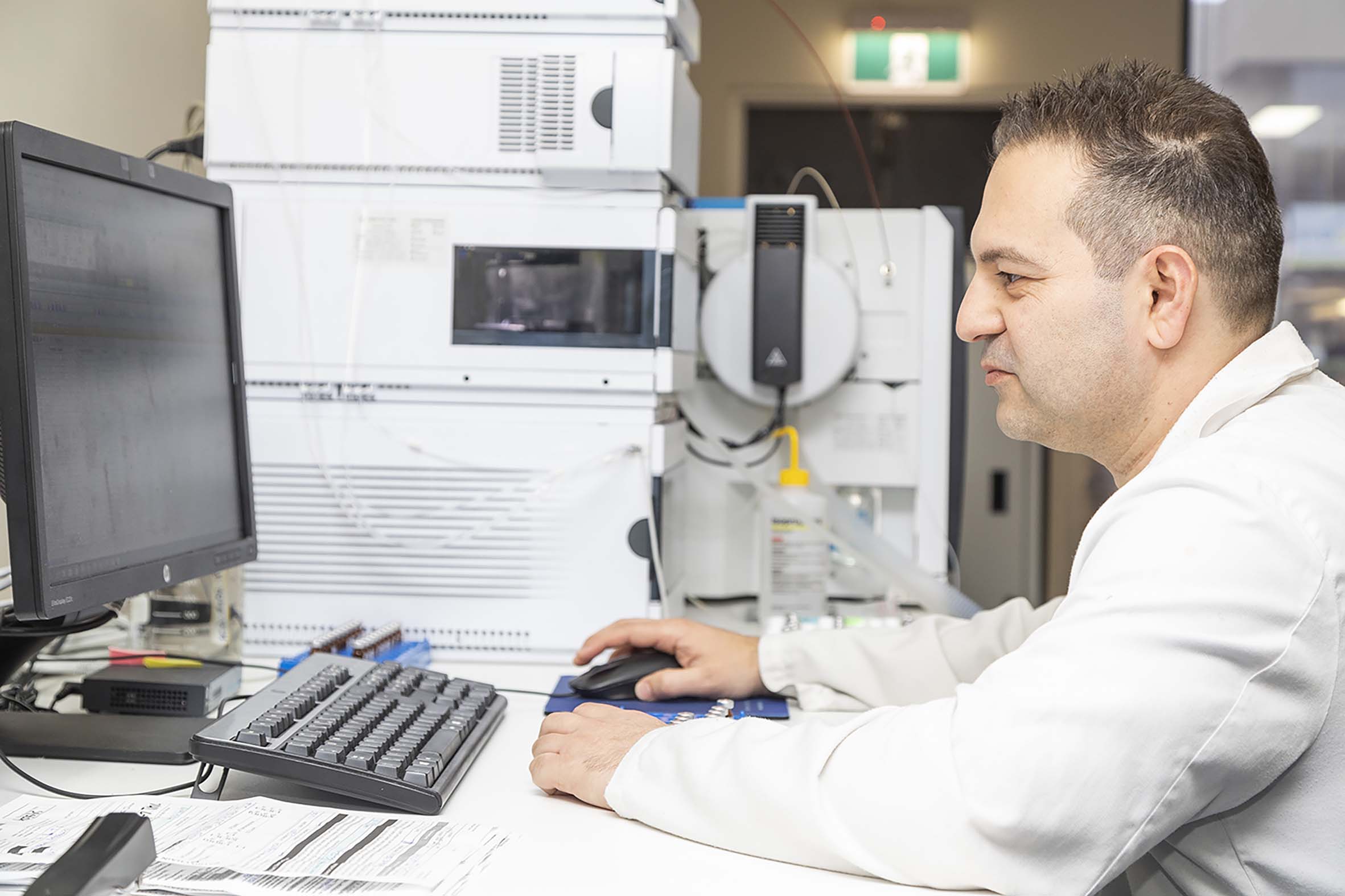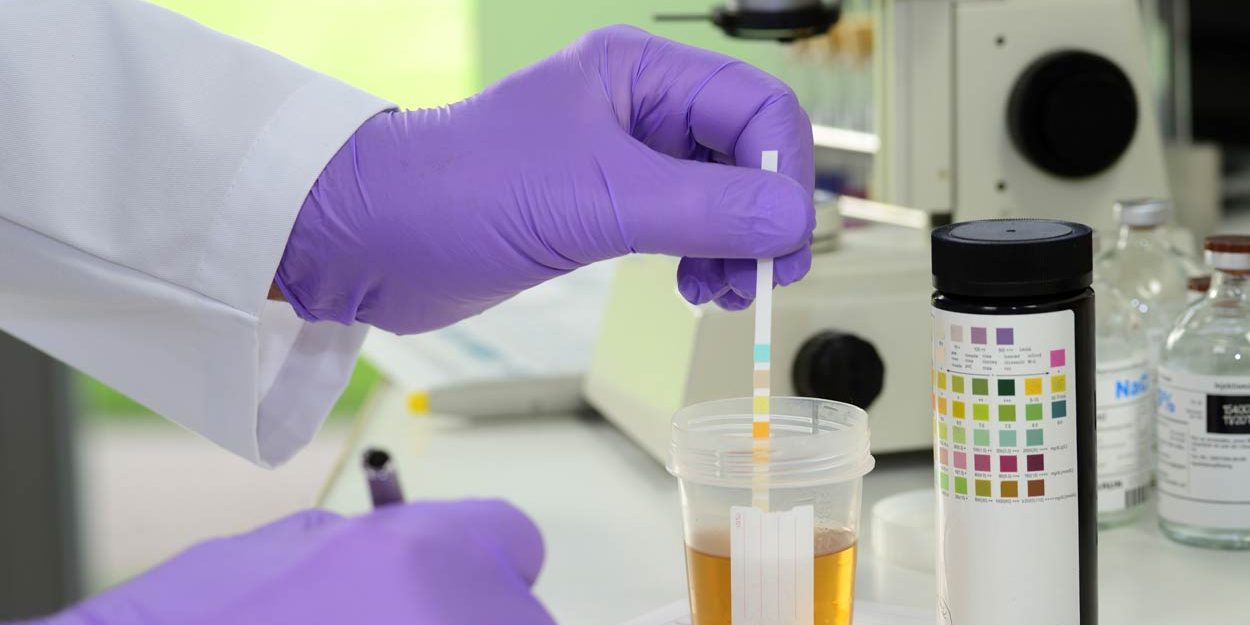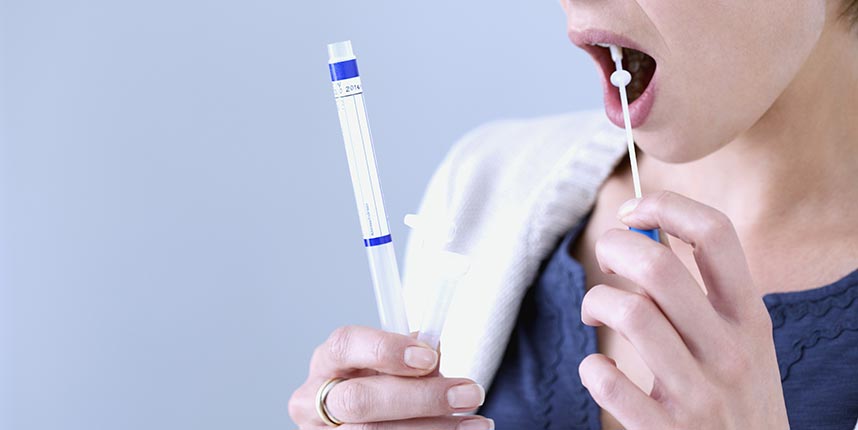It might sound like a small issue, but drinking too much water before a workplace drug test can impact the result, and potentially your employment checks or fitness for duty. Many people unintentionally over-hydrate before a test, whether because they are nervous or simply unaware that it can affect sample quality. In workplaces, especially those […]
Read moreIt might sound like a small issue, but drinking too much water before a workplace drug test can impact the result, and potentially your employment checks or fitness for duty. Many people unintentionally over-hydrate before a test, whether because they are nervous or simply unaware that it can affect sample quality.
In workplaces, especially those with safety-critical operations, accurate results are crucial. A diluted sample can cause delays, require retesting or trigger further review. For employees, that can mean stress and postponed start dates. For employers, it means lost time and increased admin. Understanding how hydration affects urine drug testing helps everyone avoid unnecessary complications.
How Does a Urine Drug Test Work?
Urine drug tests detect traces of substances, specifically metabolites, that remain in the body after use. While saliva testing is more focused on recent impairment, urine testing provides a broader picture of recent consumption.
A standard workplace urine testing process follows strict Australian Standards (AS/NZS 4308:2008). The sample is collected in a controlled environment, integrity indicators such as temperature and appearance are checked, and initial screening is completed onsite. If anything is irregular or a substance is detected above the cut-off level, the sample is securely sent to an accredited laboratory for confirmation.
This multi-stage approach protects fairness and accuracy, significantly reducing the risk of false positives.
What Happens If You Drink Too Much Water Before a Drug Test?
When someone consumes a large amount of water shortly before a test, it can dilute the urine. This lowers the concentration of drug metabolites and also key validity markers, such as creatinine.
A diluted sample can lead to:
- An inconclusive result
- A requirement to retest
- Delays in employment clearance or site access
In most cases, dilution isn’t treated as misconduct, many people genuinely don’t realise overhydration can cause issues. However, because some individuals attempt to drink excessive amounts to mask drug use, testing procedures must treat diluted samples seriously and consistently.
Normal hydration throughout the day is fine; problems arise when large volumes are consumed rapidly just before testing.
What To Do If You’ve Over-Hydrated Before Your Test
If you suspect you’ve drunk too much water before your test, the most helpful thing you can do is be transparent with the collector and follow their guidance. They may ask you to wait and provide another sample later, when the urine concentration has normalised.
Avoid continuing to drink large volumes during this waiting period, and if you take legitimate prescribed medication, have your documentation ready, this is handled confidentially through a Medical Review Officer if needed.
For employers, treating these situations calmly and consistently helps maintain trust. Most cases are honest mistakes, and employees appreciate clear communication rather than assumptions.
What To Do (and Not Do) Before a Drug Test
Do:
- Maintain normal hydration the day before and the morning of the test.
- Eat and drink normally — no special routines required.
- Bring prescription information if you take medication that could affect results.
Don’t:
- Rapidly drinking excessive water right before your appointment.
- “Detox” drinks or cleansing hacks. These are unreliable and unnecessary for compliant workers.
- Panicking. Diluted samples are common, and the process for retesting is straightforward.
How Employers Can Make The Process Clearer
Clear guidance helps reduce anxiety and prevent diluted samples. Employers can support team members by explaining:
- What to expect on test day
- Why overhydration can cause issues
- How retesting works if a result is inconclusive
- Who to speak to about medications, privately and confidentially
Good onboarding, supervisor training, and clear written policies go a long way toward ensuring testing feels professional, routine, and fair, rather than intimidating or punitive.
Workplaces that position testing as a shared safety responsibility rather than a compliance trap see greater cooperation and engagement from employees.
Simplifying The Drug Test Process
Accidentally drinking too much water before a drug test is more common than many think. Understanding how hydration affects results helps avoid delays and ensures testing runs smoothly. With the right preparation and communication, both employees and employers can feel confident in the process.
Safework Health provides accredited, confidential and highly reliable drug and alcohol testing across Australia. Our collectors are experienced, trained to national standards and focused on professionalism and dignity throughout the process.
Whether you’re preparing employees for testing or managing a regular testing program, we partner with you to ensure accuracy, compliance and a respectful process.
For accredited, reliable workplace drug testing and guidance on best-practice procedures, contact Safework Health today.
Urine drug testing is widely used in Australian workplaces to support safety, meet compliance requirements and promote a culture of responsibility. For employees, understanding how these tests work can reduce anxiety and help them feel confident on the day. For HR leaders, understanding how to conduct urine testing programs ethically and accurately is crucial for […]
Read moreUrine drug testing is widely used in Australian workplaces to support safety, meet compliance requirements and promote a culture of responsibility. For employees, understanding how these tests work can reduce anxiety and help them feel confident on the day. For HR leaders, understanding how to conduct urine testing programs ethically and accurately is crucial for maintaining fairness and ensuring legal compliance.
This article explains how urine tests work, how employees can best prepare to legitimately pass tests, and how companies can ensure their testing programs remain credible and professional.
Why Do Workplaces Use Urine Drug Tests?
The primary purpose of workplace drug testing is to keep people safe. Certain industries – including mining, transport, logistics, healthcare and construction – rely heavily on alertness, sound judgment and motor coordination. In these environments, impairment can put employees, colleagues and the public at risk.
Safe Work Australia notes that drug and alcohol impairment can contribute to accidents, lost productivity and absenteeism. While testing is a compliance requirement in some environments, many businesses also implement drug and alcohol policies as part of broader wellbeing strategies. Effective programs are not about catching people off guard, but about preventing harm and offering support where needed.
Urine drug tests remain a preferred method because they are cost-effective, reliable and capable of identifying recent substance use, which helps employers make informed safety decisions.
What Substances Do Urine Drug Tests Detect?
Workplace urine drug tests can detect a range of substances, depending on the specific testing panel used. Most commonly, tests can pick up use of:
- Cannabis (THC)
- Amphetamines and methamphetamines
- Cocaine
- Opiates
- Benzodiazepines
Some employers also include synthetic drugs and alcohol metabolites, depending on risk level and organisational policy.
What Does a “Passing” Urine Test Look Like?
A “pass” means no prohibited substances are detected above the cut-off levels defined in AS/NZS 4308:2008, and that the sample shows normal integrity, including correct temperature ranges and expected chemical markers.
If something is detected or the sample appears inconsistent, the result becomes “non-negative”, and the sample is sent to a laboratory for confirmatory analysis. This protects employees by ensuring that no decisions are made based solely on rapid-screen results.
Employees who take legitimate prescription medications (such as for ADHD, pain management or anxiety) can provide documentation for confidential review by a Medical Review Officer, who ensures the proper context is applied.
How To Prepare To Pass a Urine Drug Test Responsibly
The most reliable way to pass a urine drug test is simply to avoid illicit drug use and be aware of your workplace’s policies. Proper preparation does not require complicated methods or specialised products.
To prepare confidently:
- Stay substance-free and ensure you understand your workplace policy.
- Stay hydrated normally, rather than attempting to over-hydrate on the day.
- Bring prescription information if you take medication that may affect the results.
- Be aware of the process so you feel prepared and calm on testing day.
It can also be useful to know how long drugs are detectable in your urine if you know your workplace policies require ongoing testing.
While detection windows vary, a general guide is:
| Drug Type | Detection Period |
| Cannabis | 2-7 days (sometimes longer in heavy daily users) |
| Stimulants (methamphetamine, cocaine) | 2-4 days |
| Benzodiazepines | 1 week + (depending on type) |
These timeframes can shift based on individual factors like hydration, metabolism, body composition and frequency of use.
Can You Cheat a Urine Drug Test?
Online advice often suggests “shortcuts” like detox drinks, herbal cleanses, excessive water intake, vinegar, mouthwash or substituting a sample. In practice, these methods fail the majority of the time and can raise red flags that lead to more rigorous testing.
Modern screening includes:
- Temperature checks to ensure the specimen is fresh
- Creatinine and pH testing to detect dilution or tampering
- Chain-of-custody controls to prevent substitution
Attempting to cheat on a test not only risks disciplinary action but also undermines trust and compromises workplace safety. The safest, simplest and most ethical approach remains being drug-free and transparent about prescribed medication use.
Ensuring Credible Urine Testing For Workplaces
Passing a urine drug test is straightforward when expectations are clear: be substance-free, follow policy and prepare professionally. For employers, using accredited providers and maintaining consistent, transparent processes ensures testing programs are trusted and effective.
For reliable workplace urine testing, guidance or support implementing a compliant program, Safework Health is a leading provider. With NATA-accredited labs and experienced mobile collection teams, we support businesses in maintaining safe, compliant and productive workplaces.
We take a fair, confidential and non-judgemental approach to testing, ensuring employees feel respected and employers feel confident in their results. For more information on urine drug testing, speak with our workplace testing specialists.
Cannabis use is increasing across Australia, both recreationally and through prescribed medicinal cannabis programs. However, many companies in industries such as transportation, mining, and construction require employees to undergo drug tests for pre-employment screening, random workplace testing, or return-to-work checks. This raises the question: how long does weed stay in your system? Understanding cannabis detection times […]
Read moreCannabis use is increasing across Australia, both recreationally and through prescribed medicinal cannabis programs. However, many companies in industries such as transportation, mining, and construction require employees to undergo drug tests for pre-employment screening, random workplace testing, or return-to-work checks. This raises the question: how long does weed stay in your system?
Understanding cannabis detection times is crucial for individuals in roles that require regular checks. Even if the effects feel long gone, cannabis can leave traces in the body that remain detectable for days or, in some cases, weeks. This can impact workplace safety requirements, employment timelines and medical clearance for certain roles.
In this guide, we break down everything you need to know about cannabis detection, test passing requirements, and what to consider if you think THC might appear on your upcoming test.
What Effect Does Cannabis Have and Why Do Workplaces Test For It?
The main psychoactive compound in cannabis is THC (tetrahydrocannabinol). It interacts with receptors in the brain and nervous system, affecting:
- Coordination and motor skills
- Reaction time
- Decision-making and judgement
- Concentration and memory
These effects can impair performance and increase the risk of accidents, particularly in high-risk industries such as transport, mining, construction and manufacturing.
Under Australian Work Health and Safety laws, employers are required to provide a safe working environment. Drug testing helps:
- Reduce workplace accidents and near-misses
- Support fitness-for-duty requirements
- Meet WHS and industry compliance standards
- Identify when an employee may need well-being support
According to the Australian Institute of Health and Welfare, cannabis is the most widely used illicit substance in Australia, with approximately 11.5% of adults reporting use in the past year. Given this, clear workplace policies and testing protocols are essential.
Can You “Pass” If You Used Weed Recently?
Drug tests do not measure how “high” someone is. They detect whether THC metabolites are present above a certain threshold.
A “pass” means:
- THC is below the cut-off level, or
- A Medical Review Officer confirms valid medicinal cannabis use (if policy allows)
Someone may feel sober yet still test positive if their body has not fully cleared the metabolites, which is why timing matters.
How Long Does Weed Stay In Your System?
Cannabis detection time varies based on:
- Frequency of use
- THC strength and dosage
- Metabolism and body fat levels
- Hydration and activity level
- Method of consumption (smoking, vaping, edibles, oils)
THC is stored in fat cells and gradually released; therefore, regular or heavy use significantly increases the detection window.
Detection Windows By Test Type
| Test Type | Detects | Rough Detection Window |
| Saliva (oral fluid) | Recent use, impairment risk | 6-24 hours (up to 72 hrs in heavy users) |
| Urine | Past use, not impairment | 2-7 days for occasional users; up to 30 days for heavy daily use |
| Blood | Current or very recent use | Up to 24-48 hours |
| Hair | Historical use | Up to 90 days |
| Instant drug tests (onsite kits) | Initial screening for recent use | Similar detection ranges to saliva/urine (positives require lab confirmation) |
Workplaces may use instant drug tests for immediate results. If an on-site test detects cannabis above the cut-off, the sample is then sent to a laboratory for confirmation. This protects employees from false positives and ensures fairness.
What Do You Do If You Think Cannabis Will Show Up On Your Test?
If you believe cannabis may still be in your system, the most important step is communication and understanding your workplace policy.
For Employees:
- Review company drug and alcohol guidelines
- If prescribed medicinal cannabis, disclose privately as required
- Ask clarifying questions if unsure about policy or testing timelines
- Avoid “detox myths” – water loading, cleanses and online “hacks” are not reliable and can raise concerns
If a result does come back “non-negative,” laboratory confirmation and review by a Medical Review Officer ensure context is applied fairly.
For Employers:
Encourage transparency and provide support, not stigma. Many organisations pair testing programs with access to Employee Assistance Programs and wellbeing support, recognising that substance use and mental health can be linked.
Keeping Employees Safe and Aware
Cannabis can stay in your system for anywhere from several hours to several weeks, depending on frequency of use, metabolism and the type of test used. Understanding these timelines and how drug testing works helps employees prepare responsibly and enables employers to run fair, safe and compliant workplaces.
If your business needs trusted workplace drug testing, guidance on policy development or pre-employment medical checks, Safework Health is here to help.
Safework Health is a trusted partner for workplace drug testing across Australia. We combine scientific accuracy with professional, non-judgmental processes to support both compliance and employee well-being.
We know drug testing can feel confronting for employees and complicated for employers. Our team makes the process straightforward, respectful and compliant. Speak with us today to ensure a safe, informed and compliant workplace.
It’s important to note that medicinal cannabis contains THC unless specifically prescribed as CBD-only. Employees using legally prescribed medicinal cannabis should discuss workplace policies and any disclosure requirements with their employer or medical practitioner.
Cannabis use has become increasingly common in Australia, with the 2022–23 National Drug Strategy Household Survey reporting that 11.5% of Australians used cannabis in the past 12 months. As attitudes shift and medicinal cannabis prescriptions grow, questions about how cannabis affects workplace drug testing are becoming more frequent. One of the most common queries, especially from employees […]
Read moreCannabis use has become increasingly common in Australia, with the 2022–23 National Drug Strategy Household Survey reporting that 11.5% of Australians used cannabis in the past 12 months. As attitudes shift and medicinal cannabis prescriptions grow, questions about how cannabis affects workplace drug testing are becoming more frequent.
One of the most common queries, especially from employees preparing for a screening or HR teams managing safety programs, is how long tetrahydrocannabinol (THC) remains detectable in the saliva glands. Unlike alcohol, where impairment often correlates closely with blood alcohol concentration, cannabis metabolites behave differently in the body. This can make detection timelines confusing if you’re not familiar with the science behind testing.
In this guide, we break down everything you need to know about THC, how it’s detected in saliva and must-know information about drug testing for employees and employers.
What is THC?
THC is the main psychoactive compound in cannabis plants. It binds to cannabinoid receptors in the brain and nervous system, particularly CB1 receptors, producing psychological and physiological effects. These can include relaxation, altered sensory perception, reduced coordination, and slowed reaction time – which is why its presence in safety-sensitive work environments is monitored.
When cannabis is consumed, THC enters the body in different ways depending on the method:
- Smoking or vaping: THC travels from the lungs directly into the bloodstream, reaching the brain in seconds.
- Edibles, oils or capsules: THC is processed through the digestive system and liver, taking longer to produce effects – often 30 minutes to 2 hours.
Once absorbed, THC and its metabolites are distributed to various tissues. It is fat-soluble, meaning it can be stored in fat cells and gradually released back into the bloodstream, which is one reason detection windows can vary. Even after the “high” wears off, small amounts may still be detectable for a period.
How Long THC Stays In Saliva (and Why Detection Times Vary)
Saliva drug testing is designed to detect recent cannabis use. However, how long THC remains detectable can differ significantly between individuals. Factors influencing this include:
- Frequency of cannabis use
- Metabolism and body mass
- Amount consumed
- Potency of the product
- Method of consumption
- Hydration and oral hygiene
- Individual biological differences
While no timeframe applies universally, research and workplace testing standards suggest:
| User Type | Approx. Detection Window in Saliva |
| Single or occasional use | 12-24 hours |
| Frequent use (several times weekly) | 24-48 hours |
| Daily or heavy use | Up to 72 hours, or longer |
Saliva drug tests are preferred in many workplace settings because they more closely correlate to recent use and potential impairment, rather than past exposure.
Why Do Workplaces Test For THC?
Work health and safety (WHS) obligations require employers to provide a safe working environment. Industries such as mining, transportation, logistics, construction, and manufacturing often involve machinery, vehicles, or other hazards where impaired judgment or reduced reaction time can lead to serious incidents.
Even if someone doesn’t feel impaired, THC can impact cognitive and physical abilities, including:
- Reduced coordination and motor control
- Delayed reaction times
- Impaired decision-making and memory
- Altered perception and concentration
Can You Remove THC From Saliva Faster?
Many online resources recommend quick fixes: drinking water, special mouthwashes, gums, and even supplements. However, there is no scientifically reliable method to rapidly eliminate THC from saliva once it is present. Most “detox hacks” are ineffective and may be considered tampering.
The only proven way to reduce THC levels is time.
Some general health behaviours (hydration, oral hygiene, time between use and testing) may influence superficial detection conditions, but none guarantee a negative result if THC is still present in the saliva glands.
If you’re concerned that THC may be detected in your test:
- Review your company’s drug and alcohol policy – Many policies outline expectations, support pathways and disclosure requirements.
- Do not attempt to falsify results – Tampering can undermine trust and may result in disciplinary action.
- Seek guidance discreetly – A HR representative, supervisor or medical professional can provide advice.
- Access support if needed – Workplace Employee Assistance Programs (EAP) offer confidential counselling and assistance.
Safely Delivering The Best Results
THC can typically be detected in saliva for 12 to 72 hours, depending on frequency and method of use, metabolism and individual factors. Understanding how long cannabis remains in the system helps employees make informed choices and supports HR teams in promoting a secure and productive workplace.
If your organisation needs reliable drug and alcohol testing, medical assessments or workplace training, Safework Health is here to assist. Safework Health is a trusted national provider of drug and alcohol testing, medical assessments and workplace health services. We work with organisations of all sizes, from small businesses to large industrial sites, to create safer, healthier workplaces.
We understand that drug testing can be a sensitive topic. That’s why we prioritise discretion, employee dignity, and education, helping organisations maintain compliance while fostering trust and wellbeing.
Get in touch with our team today to learn how we can support a safer, healthier workplace.
Safework Health recently carried out Wastewater Surveillance Testing at a mine site in New South Wales.
Read more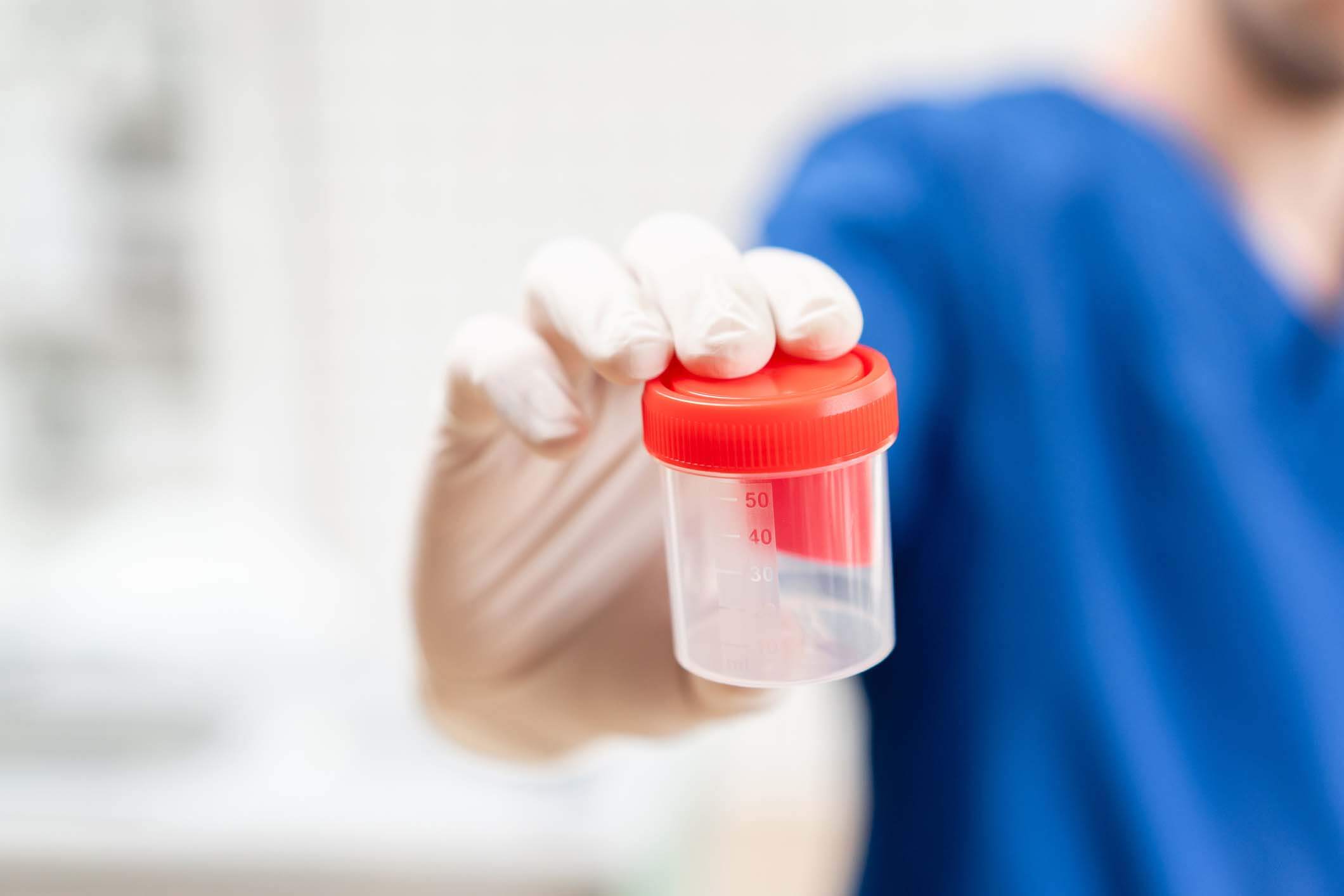
Drug Testing Pre Employment
Drug testing pre-employment is an important step for many businesses in Australia to ensure a safe and productive workplace. Employers rely on these tests to identify potential substance abuse issues before hiring a new employee. Failing a pre-employment drug test in Australia can impact an individual’s chances of securing a job, especially in industries where safety is paramount.
Understanding why these tests are required, how they work and how the results impact employment is important for both employee and employers to be able to implement and maintain a healthy work environment.
Understanding Pre-Employment Drug and Alcohol Testing
Pre-employment drug and alcohol testing is a standard process in many Australian industries, including construction, mining, and transport. Employers use these tests to ensure candidates are not under the influence of substances that could impair their ability to perform their duties safely. When an applicant undergoes an instant drug and alcohol test as part of the hiring process, they are typically screened for common substances such as cannabis, amphetamines, cocaine, opiates, and alcohol.
What Happens if an Applicant Fails a Pre-Employment Drug Test in Australia?
If a candidate ends up failing a pre-employment drug test in Australia, the consequences can vary depending on the company’s policies. Generally, the employer will withdraw the job offer. In safety-sensitive industries, this practice is common to reduce the risk of workplace accidents and ensure compliance with occupational health and safety regulations. Employers may also recommend drug and alcohol training for candidates who fail the test and wish to reapply in the future.
Why Do Employers Conduct Drug Testing Pre Employment?
Employers implement drug testing pre-employment to protect their workforce and the integrity of their operations. Hiring employees who are free from substance abuse helps businesses avoid potential legal issues, maintain productivity, and reduce workplace incidents. Regular testing ensures that all employees are aware of the company’s stance on drug and alcohol use and understand the importance of a drug-free environment.

The Legal Implications of Failing a Pre-Employment Drug Test in Australia
Failing a pre-employment drug test in Australia can have legal implications, especially in regulated industries. Employers are required to comply with workplace safety laws and may be legally obligated to ensure their employees are not impaired by drugs or alcohol. Candidates who fail a drug test may find it difficult to challenge the outcome if the company’s testing procedures follow legal guidelines.
Employers who enforce pre-employment drug and alcohol testing must have clear policies in place. These policies should outline the testing procedures, consequences of a positive result, and opportunities for retesting or support, such as drug and alcohol training.
What Employees Should Know About Instant Drug and Alcohol Tests
An instant drug and alcohol test provides quick results, typically within minutes. These tests are often used in pre-employment screening because they help employers make timely hiring decisions. Candidates should know that instant tests are just as reliable as laboratory tests and can detect recent drug or alcohol use.
Before taking a pre-employment drug test, candidates should disclose any prescription medications or legitimate substances that could affect the results. Honesty during this process can help avoid misunderstandings and potential issues with the employer.
Steps to Take After Failing a Pre-Employment Drug Test in Australia
Failing a pre-employment drug test in Australia does not have to be the end of your career prospects. Here are some steps candidates can take to address the situation:
1. Request Clarification: If you believe the test result is inaccurate, request a confirmatory test or clarification from the employer. Some companies allow candidates to retest to ensure accuracy.
2. Seek Support: Consider enrolling in drug and alcohol training to address any substance use concerns. This training can help you understand the impact of drugs and alcohol on workplace safety and demonstrate your commitment to a drug-free lifestyle.
3. Prepare for Future Opportunities: Once you complete any necessary training or support programs, you can reapply for jobs with a stronger understanding of workplace expectations regarding substance use.
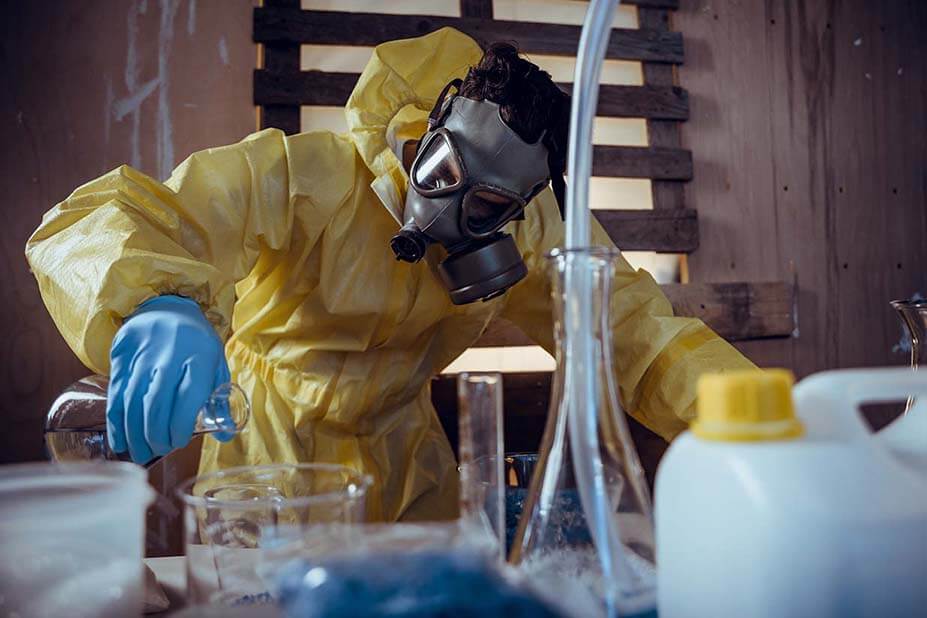
Support for Pre Employment Drug Testing
Failing a pre-employment drug test in Australia can be a setback, but it can also be an opportunity to seek support and make positive changes. By understanding the reasons behind drug testing and the steps to take after a failed test, candidates and employers can contribute to safer, healthier workplaces.
Safework Health recently carried out Wastewater Surveillance Testing at a mine site in New South Wales.
Read more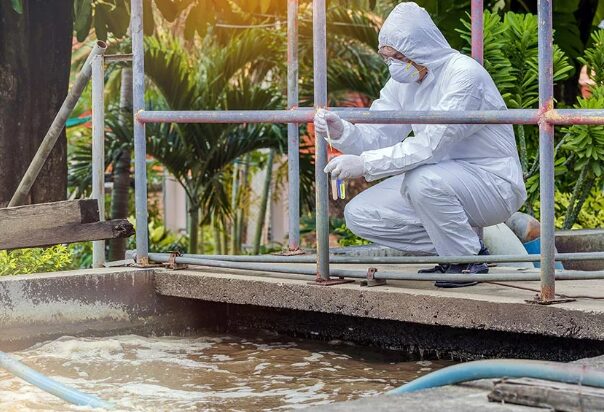
Introduction
Understanding substance abuse in the workplace is significant, especially in high-risk workplaces like mine sites and construction sites. An emerging method to understand illicit substance abuse in the workplace is to use wastewater testing. This method provides useful data on what drugs are being consumed by employees at these sites, which can lead to enhanced testing solutions and guide policy decisions, Safework Health recently completed wastewater surveillance testing in New South Wales for a client. This blog post will discuss what wastewater surveillance testing is, the benefits of wastewater testing, and a real-world case study conducted by Safework Health.
What is Wastewater Surveillance Testing?
Wastewater surveillance testing is a scientific method used to analyse wastewater to determine the presence of substances, such as illicit drugs. Wastewater testing is often conducted at the workplace by analysing sewage to gain insight into drug use at a site. Wastewater is usually conducted over a period of time to analyse drug usage and trends. It is a non-invasive way of determining if there is issue with illicit drug use on site. It is a highly efficient approach to gathering real-time evidence of substance abuse in the workplace.
Why is Wastewater Surveillance Testing Beneficial?
There are many reasons why companies decide to use wastewater testing, especially in workplace environments such as construction, mining and other industries where workplace safety is significant. Some of the key advantages of wastewater testing include:
- Data- Driven Decision Making: As wastewater testing gives insight into what drug employees are using, companies can tailor their drug and alcohol polices as well as provide education on the risks associated with drug use based on real-life data.
- Detection of Trends: Companies can identify emerging patterns of drug use and educate their staff on new drugs that can be extremely harmful, which may reduce the number of employees consuming drugs.
- Policy Validation: Wastewater testing helps confirm if a company needs to update their existing drug and alcohol policy. A company that regularly carries out wastewater testing could see if changes made to their policies are working.
- Privacy friendly: It is a non-invasive way to gather information on drug use at a site with quick results.
This testing method is particularly useful in industries where safety and fitness for work are critical, as it helps mitigate risks associated with substance use.
Case Study: Wastewater Surveillance Testing at a Mine Site in New South Wales
Background
Wastewater Testing provides invaluable information about drug use in an organisation and can assist in tailoring your current drug and alcohol policy. Safework Health recently carried out wastewater testing at a coal mine site in New South Wales to better understand the role illicit drug use plays in fitness for work at the site. The aim for the client was to validate the existing onsite testing program and to understand the impact of the findings and to compare them to data from similar regions and industries.
Findings
The site reported significant methamphetamine use, with 3–3.5% of the workforce identified as users of the illicit drug. Amphetamine use was observed at moderate to high levels, while cocaine usage was moderately high, equating to over 52 standard doses per 1,000 workers. Morphine/diacetylmorphine use was recorded at moderate levels, and oxazepam usage was detected at a low rate.
Recommendations
The HSE team should analyse data for correlations between drug use and rosters, continue wastewater monitoring, and implement randomised blanket testing. Urine screening should be considered for its extended and more favourable detection windows. Leadership support is needed for expanded testing and a targeted education campaign on drug risks, detection methods, and rehabilitation resources. Effectiveness will be evaluated via wastewater retesting in 6–12 months, with success defined by a significant reduction in drug use.
If you would like more information about Wastewater Surveillance Testing, please call us on 1300 795 227 or email us at [email protected]. Safework Health have carried out numerous wastewater surveillance testing for clients in the past, with accurate and fast results.
Safework Health recently carried out Wastewater Surveillance Testing at a mine site in New South Wales.
Read more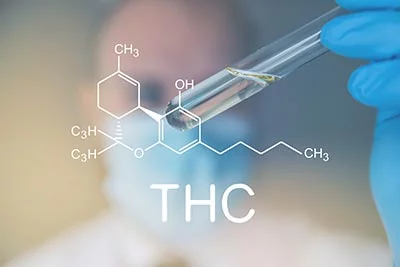
Drug Testing Cutoff Levels Australia
Drug testing cut-off levels in Australia determine the minimum concentration of a drug or its metabolites that must be present in a sample to produce a positive result. These levels ensure fairness and accuracy by distinguishing between recent drug use and trace amounts that could result from environmental exposure.
For employers conducting a drug test for a job, understanding these cutoff levels is important for maintaining a compliant and effective workplace drug testing policy and ensuring fairness and understanding during testing.
Cut-Off Levels for Urine Drug Testing in Australia
Urine drug testing is one of the most common methods for workplace testing. The cut-off levels for urine drug testing in Australia are set according to Australian Standards (AS/NZS 4308:2008). These standards help ensure consistency and reliability across all tests. A urine drug screen in Australia typically checks for substances such as:
- Cannabis (THC): 50 ng/mL
- Cocaine: 300 ng/mL
- Amphetamines: 300 ng/mL
- Methamphetamines: 300 ng/mL
- Opiates: 300 ng/mL
- Benzodiazepines: 200 ng/mL
Employers rely on these thresholds to avoid false positives and ensure that test results reflect actual substance use.
Why Drug Testing Cut-Off Levels Are Important
Cut-off levels are important in drug testing because they help balance accuracy with fairness. They prevent individuals from testing positive due to incidental exposure or minimal drug use that doesn’t impair performance. For instance, candidates undergoing a drug test for a job should not be penalised for trace amounts of substances that do not affect their ability to work safely.
How Do Cut-Off Levels Apply to Different Industries?
Industries like mining, construction, and transportation often have strict drug testing policies due to safety concerns. In these sectors, employees may need to complete assessments such as a coal board medical QLD, which includes drug testing. Understanding the drug testing cut-off levels in Australia helps employers enforce policies consistently while ensuring workplace safety.

Common Substances Tested and Their Cut-Off Levels
In a urine drug screen in Australia, each drug type has a specific detection window and cut-off level that determine how long the substance remains detectable in the body. Cannabis (THC) can typically be detected for several days after use, with a cut-off level of 50 ng/mL. Cocaine, on the other hand, has a shorter detection period of about 2 to 4 days and a standard cut-off level of 300 ng/mL.
Amphetamines and methamphetamines share a similar detection period of up to 3 days, with a cut-off level of 300 ng/mL. Opiates, also with a cut-off of 300 ng/mL, can be identified for around 3 days after use. Benzodiazepines vary depending on the type but can remain detectable for up to a week, with a typical cut-off level of 200 ng/mL.
Understanding these detection windows helps employers accurately interpret the results of a drug test for a job. Applying these standard cut-off levels ensures fairness and consistency in workplace drug screening, allowing businesses to make informed decisions while maintaining safety and compliance.
Factors That Can Influence Drug Testing Results
Several factors can impact drug testing results, including metabolism, hydration, and frequency of use. For instance, someone with a slow metabolism may have detectable drug levels for longer periods. It’s important for employers to consider these factors when interpreting results to ensure fairness. Testing providers must follow strict protocols to ensure the accuracy of results.
How Employers Use Drug Testing Cut-Ooff Levels in Australia
Employers use drug testing cut-off levels in Australia to maintain workplace safety and compliance. By adhering to established cut-off standards, they can:
- Ensure fair testing and avoid false positives caused by trace amounts of substances.
- Promote safety by identifying employees who may pose a risk due to substance use.
- Comply with regulations and follow legal requirements for workplace drug testing.
Employers who implement urine drug screen Australia procedures based on these standards can reduce the risk of workplace incidents and maintain a safer environment.

Best Practices for Employers Conducting Drug Tests
When conducting drug tests, employers should follow these best practices:
- Create Clear Policies: Develop and communicate clear drug testing policies.
- Use Accredited Providers: Use accredited testing providers to ensure accuracy.
- Offer Support Programs: Offer support such as education and drug and alcohol training for employees.
These practices ensure that drug testing programs are fair, compliant, and effective.
Ensuring Fair and Effective Drug Testing Policies
Understanding the cut-off levels for urine drug testing in Australia helps employers implement fair and effective drug testing policies. By following established standards, businesses can maintain workplace safety and compliance. Regular drug testing, combined with drug and alcohol training, promotes a healthier and safer work environment for all employees.
Safework Health recently carried out Wastewater Surveillance Testing at a mine site in New South Wales.
Read more
Screen Drug Test
Drug screenings are commonly used in pre-employment drug and alcohol testing in Australia. These tests are usually fast, providing results within minutes, making them ideal for workplaces where quick decision-making is important. However, drug testing is also used in pre-employment checks, especially if the initial screening indicates a positive result.
Here, we’ll go through the key differences between these types of drug tests, including when they are best used and how they can help improve workplace safety.
The Key Differences Between Drug Tests and Drug Screens
Simply put, a screen drug test is a preliminary process used to detect the presence of drugs in an individual’s system. On the other hand, a drug test is a more thorough and accurate analysis that involves laboratory testing to confirm the presence of drugs or their metabolites in the sample. Unlike a screen drug test, which is a quick check, a drug test uses advanced methods to provide definitive results.
Drug tests are useful when confirming positive screening results or when higher accuracy is required. Employers who require detailed results, such as those in safety-critical industries, often rely on types of drug tests like urine, blood, or hair follicle tests to ensure compliance with workplace safety policies.
Types of Drug Tests Used in the Workplace
Different types of drug tests serve various purposes in workplace safety and compliance. Understanding these different types of drug tests helps employers select the right method based on their workplace needs and safety requirements.
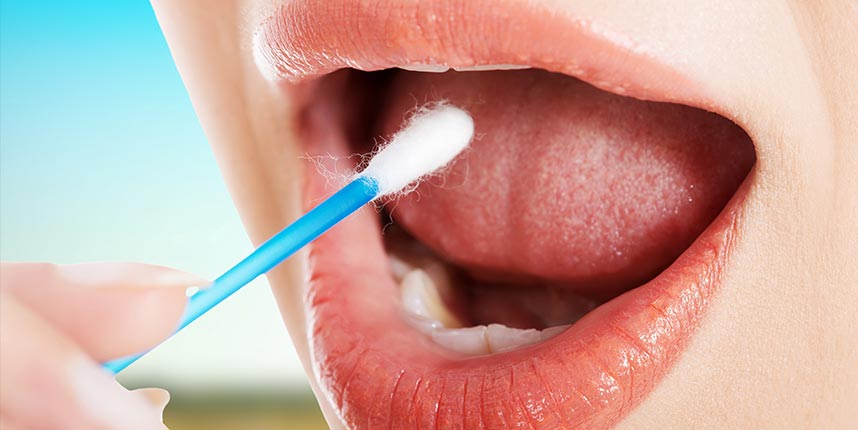
Some of the most common types include:
Urine Drug Tests: These are the most commonly used tests in workplaces for detecting recent drug use. They are often part of pre-employment drug and alcohol testing in Australia.
Blood Tests: These tests are highly accurate and detect current impairment levels, making them suitable for post-incident testing.
Hair Follicle Tests: These can detect drug use over an extended period, typically up to 90 days, and are used in industries that require detailed history checks.
Saliva Tests: These tests detect recent drug use and are easy to administer on-site. They are popular for random or post-incident testing.
When to Use a Drug Screen vs. a Drug Test
Employers use a screen drug test for initial testing because it is fast, affordable, and easy to administer. This makes it ideal for routine workplace checks, random testing, and initial screenings during the hiring process.
A drug test, on the other hand, is appropriate when accuracy is essential. Employers may use drug tests to confirm positive screening results, investigate workplace incidents, or ensure compliance with specific regulations like a Queensland coal board medical.
Accuracy and Reliability of Drug Screening and Testing
Drug screens offer rapid results but may sometimes produce false positives or negatives. Factors like medications, environmental contamination, and improper handling can impact accuracy. For this reason, employers often follow up with a more accurate drug test if a screen drug test shows a positive result.
Drug tests, especially those conducted in laboratories, are highly reliable. They provide detailed and legally defensible results, making them suitable for industries where safety is important and compliance with regulations is required.
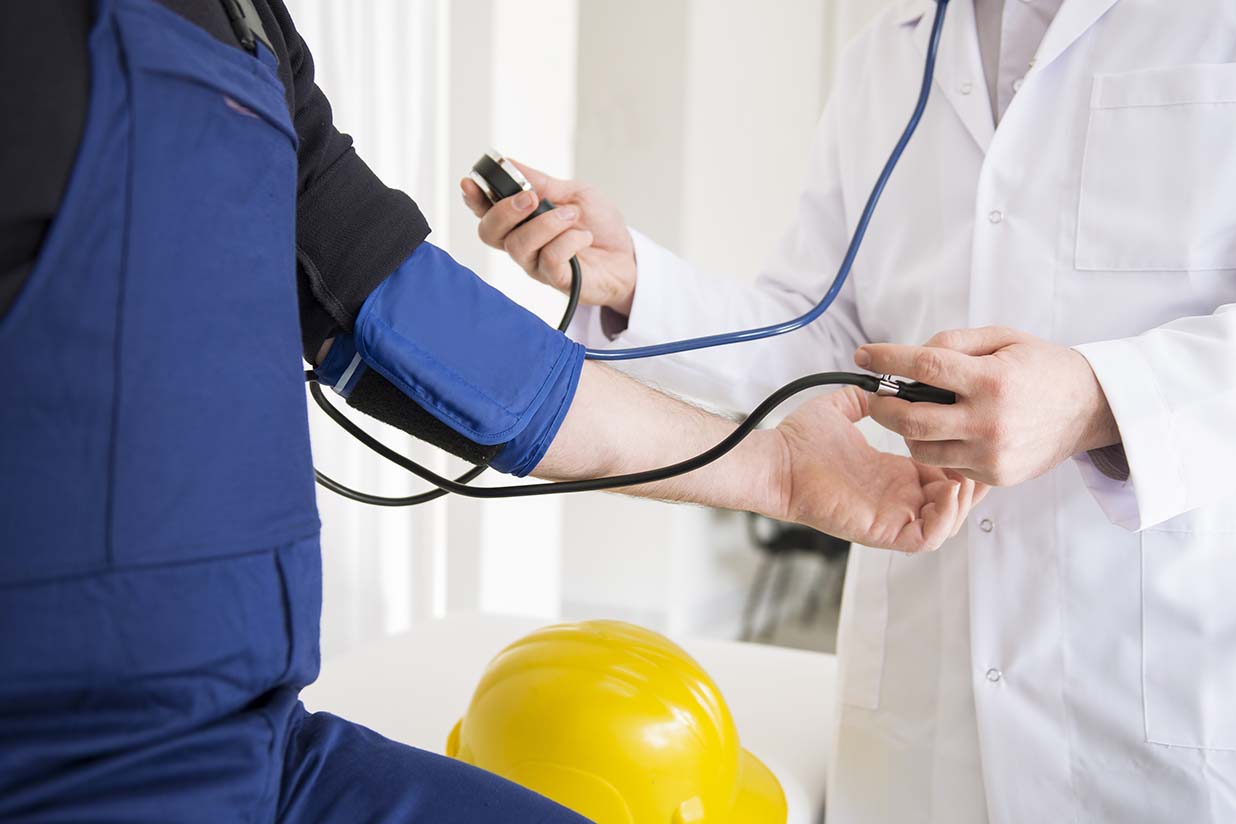
The Role of Drug Screening in Occupational Health Services
Drug screening and testing are essential components of comprehensive occupational health services. These processes help employers maintain a safe workplace, reduce the risk of accidents, and ensure compliance with health and safety regulations. Regular screening and testing, combined with clear workplace policies, promote a drug-free work environment.
Best Practices for Workplace Drug Testing
To implement effective drug testing policies, employers should:
- Use Clear Policies: Outline when and how drug screening and testing will occur.
- Train Staff: Ensure staff administering tests are properly trained to reduce errors.
- Offer Support Programs: Provide resources and occupational health services to support employees dealing with substance issues.
These best practices help ensure fairness, accuracy, and compliance with workplace regulations.
Choosing the Right Method for Your Workplace
Choosing between a screen drug test and a full drug test depends on your workplace needs. For quick and routine checks, a screening test is effective. For situations requiring detailed and confirmed results, a comprehensive drug test is the better choice. Both methods play an important role in maintaining workplace safety and ensuring compliance with industry regulations.
Safework Health recently carried out Wastewater Surveillance Testing at a mine site in New South Wales.
Read more
Instant Drug Test
An instant drug test provides employers with rapid results to identify the presence of drugs in an employee’s system. These tests typically use a urine sample and deliver results within minutes. Instant urine drug tests are popular for workplace screening because they are quick, cost-effective, and convenient. Employers often use them during a pre-employment drug test to ensure potential hires are fit for the role.
Understanding The Accuracy of Instant Urine Drug Tests
Instant urine drug tests are accurate when used correctly, but several factors can influence their reliability. Most instant drug screens have a high accuracy rate, often detecting commonly abused substances like cannabis, cocaine, amphetamines, and opiates. However, the quality of the test kit and the conditions under which the test is administered can impact the results – which is why it’s important for employers to follow best practices to ensure the accuracy of each instant drug screen.
Factors That Affect Instant Drug Test Accuracy
Sample Handling: Mishandling a urine sample can lead to inaccurate results. Following proper procedures helps maintain the integrity of the instant urine drug test.
Detection Windows: Different drugs remain in the system for varying lengths of time. An instant drug test may not detect substances that were used several days prior.
Environmental Contamination: Contaminated testing environments can affect results. Clean, controlled conditions will improve the accuracy of tests.
Medications and Substances: Certain prescription medications can trigger false positives. Candidates should disclose any medications before the test.
For the most reliable results, you can pair instant tests with laboratory confirmation when necessary.
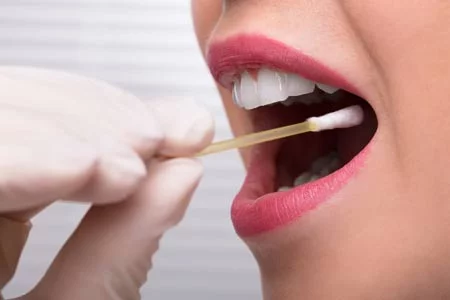
Instant Drug Tests vs. Lab-Based Tests
The main difference between these two tests is that instant drug tests offer speed and convenience, while lab-based tests generally provide a higher level of accuracy. Lab tests can detect a wider range of substances and provide more detailed results than instant tests, however, they take longer and are more expensive. Employers often use instant drug screens for initial testing and send positive samples to a lab for confirmation.
During a pre employment drug test, an instant urine drug test can help employers make timely hiring decisions. If there are concerns about accuracy, a follow-up lab test ensures the results are reliable.
The Benefits of Using Instant Drug Screens for Employers
Instant tests are particularly useful for industries that require regular drug screening, such as construction, transportation, and mining, thanks to several key benefits:
- Quick Results: Instant drug screens deliver results within minutes, allowing employers to act quickly.
- Cost-Effectiveness: Instant tests are less expensive than lab-based tests, making them suitable for routine testing.
- Convenience: Instant tests are easy to administer on-site, reducing downtime for employees.
Employers can conduct efficient urine drug screens, and Australian businesses can better maintain workplace safety.
Are There Limitations of Instant Drug Tests?
While instant drug tests offer many advantages, they also have limitations. Instant tests may produce false positives or negatives due to environmental factors, sample contamination, or medication use.
Employers can improve the accuracy and reliability of instant drug tests by following these best practices:
- Use High-Quality Test Kits: Reliable brands reduce the risk of inaccurate results.
- Train Staff: Ensure staff conducting tests are trained to follow proper procedures.
- Maintain Clear Policies: Develop policies that outline the testing process and consequences of positive results.
For highly sensitive roles, such as those involving safety-critical tasks, employers may prefer lab-based testing to confirm instant results.
When to Use Instant Urine Drug Tests
Instant urine drug tests are ideal for:
- Pre-employment screening to quickly verify that candidates meet workplace safety requirements.
- Random Testing to deter substance abuse by conducting unannounced tests.
- Post-incident testing to identify if drugs contributed to a workplace incident.
Employers who use instant tests appropriately can ensure a safer and more productive work environment. Incorporating drug and alcohol training also helps employees understand the importance of maintaining a drug-free workplace and the testing process.
Ensuring Workplace Safety with Instant Drug Screening
Instant drug screens are valuable tools for maintaining workplace safety and compliance. Employers can confidently use an instant urine drug test for quick and reliable screening while following up with lab confirmation when needed. Combining instant testing with drug and alcohol training helps reinforce a company’s commitment to a safe, drug-free workplace. Regular testing, including pre-employment drug tests, supports ongoing safety and productivity.
By implementing proper policies and procedures, employers can use instant drug tests effectively and fairly. For industries where safety is a priority, reliable screening methods like a urine drug screen and regular assessments ensure a healthier, safer workforce.

